| Revista Umělec 2007/1 >> PARADISE LOST AND FOUND | Lista de todas las ediciones | ||||||||||||
|
|||||||||||||
PARADISE LOST AND FOUNDRevista Umělec 2007/101.01.2007 Alena Boika | paradise | en cs de |
|||||||||||||
|
or For the Rights of Black-And-White Cows!
When my colleagues at the editorial office learned where I was going they all laughed at the place‘s name, Shargorod. Nobody had ever heard of it and my own knowledge was merely from a press release and poor internet sources. I was speaking enthusiastically about a small remote Ukrainian town with a rich history not far from the famous city of zhmerinka (one that, likewise, none of my colleagues had heard of) with 8000 inhabitants, and where an international festival for contemporary art would be taking place (from August 10 to 20, 2006). My colleagues skeptically nodded their heads. They were jealous that I was able to embark on a journey that so many creative Europeans, with their inclinations for adventure, would enjoy. Arrival and Opening Traveling from Prague to Kiev was faster than the trip from Kiev to Shargorod. At three in the morning I arrived at Zhmerinka station. An empty platform. A fresh August night. I passed through the dim light of street lamps and peered into the station’s windows. Yellow wooden chairs. Several people sleeping. The scene might have been the same a century ago. Time seemed to have stopped and switched to some unknown rhythm. Someone called me. A round lively man took me to his car and my travels began. We went along a country road; fir-trees flashed by, the air smelled of childhood and adventure. Joyful expectation of a holiday and the foretaste of something still unknown drove away the chilly remains of sleep. We arrived. I did not want to wake anyone up. I was sitting on the steps looking up and smiling. In front of the small hotel building, which had stood since the ancient times when the walls were exclusively painted in blue or green, majestic black fir-trees stood nearby and a magnificent starry sky stretched overhead (later, listening to my account, one my friends said that such a sky could never be seen through Milan’s thick covering of smog). The birds gingerly tested their voices. Yulya Gnirenko, the project coordinator, appeared in a red plaid blanket. She said that everything was all right, showed me my bed, offered my some wine, and fell back into a short and troubled sleep. Roosters‘ crowing awoke me in the morning. Several times before I had tried to turn off the alarm clock before realizing that it was not a mobile phone, but real roosters that were crowing. Among the fir-trees and green grass, tame and curious hens were strolling. On a gymnasium wall across the street, phallic graffiti playfully shone pink, by APL 315. After my morning exercises, coffee and an orange, I was ready to discover this amusing and surreal world full of absurd art. On the other side of the wall I can see its first and very worthy representatives – heroes of a comic created by the talented artists Psya Krev. Later, the venerable artist Ilya Chichkan (Kiev-Berlin) bothered them with criticism such as, “that‘s no good to use comic strips in graffiti,” and exclamations like, “where is your determination, where is the protest?” The young artists kept silent in embarrassment. Still, their comic heroes are truly beautiful and have underlying social and political themes. The gymnasium was spacious and festive thanks to a joyful mess of colors, works and objects. It was breakfast time and only the most dedicated people had stayed in the gym to continue working. Vladimir Kolesnikov gazed critically at his Renaissance Man and added more lines, ones that were only visible to him. The scene was suspiciously watched by a 4.5 meter portrait of a city mayor that had a ladder leaned against the mayor‘s iron teeth. Later, a real mayor admired the work by Ilya Chichkan with mixed pleasure and doubt. The large size of the work enhanced the work’s argument. Lesya Khomenko‘s naturalistic goalkeeper stood in the gateway (he only looked like a goalkeeper as a result of the location, but he lost his sports aura when moved to the wall of a house). No one remained indifferent to the size and specific character of the gymnasium turned studio: it was monumental with painting as the dominant mode of expression. Vladimir Seleznev was slouched near a painting of Jesus Christ and the Virgin which he copied from photos of Shargorod’s Catholic Church. His works called attention to the church’s façade—something well known, but hitherto unseen from such a painterly perspective. I walked through the gym and went outside. Dogs dashed along a dusty road. Young mothers with prams walked along a decorated cemetery covered with blue and pink flowers. The sun was shining. The festival‘s billboards invitingly shone green on the old building of a bus station. Big women sold melons, watermelons, and other gifts of nature. Taxi-drivers stood beside their old Zhigulis, nibbling sunflower seeds idly. A three-hour tour of the city, conducted by festival founder Alexander Pogorelsky, was awesome. The town’s outwardly plain, reserved and slow life, with numerous multi-faith cemeteries and fading beautiful buildings with unique Jewish architecture – all took on an absolutely different look. And the idea to bring contemporary art to a little provincial town, where even rivers fall asleep, did not feel that odd any more. As long as I’ve mentioned the morning, I’ve got to say something about the evening. It began with swimming in a waterfall, after Spider—curator Nikolai Palazhchenko—called out to everyone at the camp, “To the waterfall!” Spider somehow managed to be everywhere and was on time for everything just as any red and blue-clad superhero could be. The swimming was accompanied by the screams of Ilya Chichkan in his birthday suit. The evening was also filled with remarkable video viewings, wine, hookahs and, of course, with conversations about art and the salvation of the nation. At first, I was frightened by Spider‘s ability to appear from anywhere: Spider attacked poor Yulya Gnirenko with screams. But I got used to it. Yulya, a cool-headed girl, smiled softly in response to any screams; the work went on – it was a real team, one that stood firm and brilliantly overcame all the difficulties. The night wasn’t lacking some aftermath: Yulya‘s spotted sun-burnt skin and Spider‘s bandaged head. Many days later, when they managed to understand just how much they had done, they sat down, smoked a hookah for four hours, and said nothing. About Different Art: Working With Space The art overflowed. It flowed out, and filled the streets. A drawing of a man with an ideal Cinquecento figure with arm swung out, as if about to tumble down from a water tower. Vladimir Kolesnikov selflessly worked on the man during the morning hours; at a height of 10 meters with his head thrown back, if not repeating the actions of the old masters of the Renaissance, he certainly evoked them. The lifeless surface of the concrete tower was transformed into a warm and vivid fresco radiating beautifully in the sunset. One of the most outstanding projects was installed in an old synagogue with intact architecture, now a juice and fruit drink factory. In the building, with its thick walls, arches, elegant lines of floors, where the spirit of the past and the smell of processed berries reign, a project by Anna Broshe entitled, Women‘s Stories: Read Lips was set. Contours of women‘s figures were drawn with red paint on glass. The characters were easily recognizable (for example, heroines of Gogol‘s "The Evenings at Khutor near Dikanka," "The Decameron" by Bocaccio, "Laura" by Petrarch). The figures were placed everywhere in the synagogue and were enhanced with well thought-out lighting, causing the figures to come alive and cast double and triple shadows. The effect was even stronger due to the sanguine color, the color of love and war. Huge bucket-like barrels underlined the combination of power and grace. Ilya Chichkan‘s photo was exhibited in a movie theater is another example of the effective use of space. The deliberately ill-printed photo features Ukrainian artist Masha Shubina in a bright dress and a shawl, a floor vase with flowers beside her. Real flowerpots with drooping vines hang on the wall and call to mind Soviet institutions, a board of honor, and the ideology that made women pose like that – raising their heads proudly as they carry themselves into the bright future in spite of the poor quality of paper and everything. A minimalist, extremely expressive project by Boris Mikhailov, however, unavoidably attracted the attention of viewers. In many places he posted a half face portrait (21.5 x 29 and 14.5 x 21.5) of festival founder Alexander Pogorelsky, resembling a "wanted" poster. It was a peculiar reference to the same boards of honor and a gentle hint - tracing back to Renaissance traditions, when portraits of patrons of art were posted on the walls, - representing that people like Pogorelsky who implement such ideas with his level of enthusiasm aren’t easy to find. Town as Exhibition Space The day of the festival‘s official opening became a real holiday for all the residents and guests. Balloons flew up (white balloons with a blue Star of David by Victoria Begalskaya) and a salute entitled Large-Size Battery that corresponded to the art’s forceful arrival in Shargorod was displayed. Heaven‘s Messengers, a somewhat pathetic performance-sermon, shown by the REP group artists in spacesuits about art saving the world, was enlivened with a humorous provocation by Ilya Chichkan. The town was filled with all the art, now removed from its hiding place in the gymnasium. Beautiful paintings were hung on the walls of houses and were enhanced by their installation in a natural space, expanding the space and using it effectively. For example, Fridges‘ Repair by Alexander Gnilitsky blended in nicely with the town’s landscape. Speaking only of paintings exhibited in the streets, this was undoubtedly one of the best examples of a dialogue between the space and the work from both a thematic and technical (colors, performance technique) viewpoint. A work by Masha Shubina, who had painted her self-portrait in the form of a grim reaper with a scythe was inspired by the town‘s history and cemeteries that encircle it. Along with "folk" graffiti its meaning became especially dear to Shargorod residents who gave it their own title of "Death is Beautiful!" Maxim Mamsikov‘s work is a peculiar reflection about a dump, where past and present, time and space mingle, where history may be broken down into atoms and reduced to zero. The subject of the dump or storehouse is in such harmony with Shargorod, a small town with a centuries-old history, where there are more graves than people who can visit them. This dying down and flowing away of life is described in three sets of photos by Evgeny Umansky, Sergey Bratkov, and Alexey Plutser-Sarno. Ramshackle wooden doors with the remains of fine fretworks, crooked steps, nailed up windows… Total Inventarization by Vyacheslav Akhunov is about an attempt to stop time, which ruins houses and keeps only keys… Nikita Kadan‘s nuclear mushroom clouds against a background of dreamy office chairs - a work, where there is no place for a human being, can be understood as a peculiar continuation of the same topic. Or it can be seen as a request, "Sit down and watch. Think." Alexander Shaburov (Blue Noses) effectively used the subject of post-communist international conflicts by demonstrating a joke from the local press, "Killed a Muscovite – a trifle, however, a pleasant one!" Nationalism can be seen in a work by Anna Broshe entitled, Global Shevchenko. To the portraits of famous writers from different countries and times she added magnificent Ukrainian moustaches. Another work by Anna Broshe was an inscription on a billboard (which was apparently for movie posters or advertisements, but there weren’t any movies and there was nothing to advertise) that read "The beautiful always exists, it does not appear, does not disappear, does not increase, does not decrease…" On the movie theater building a work was placed, which became the resident’s favorite – realistic graffiti with fairy elements (authors Maya and Misha-Most) – with street lamps, houses, and other ordinary things. "This one is a real beauty!" Shargorod residents admired. On the contrary, Apl 315 graffiti that was drawn on an old garage building greatly embarrassed both local residents and critics from Kiev. Looking suspiciously at the huge horned figure, an old lady asked artists, "Is this paint removable?" In response to their answer of, "Why remove such a cute cow," she said, "This is not a cow. This is a devil – I can tell by the horns." This dialogue is just a trifle in comparison with a conversation between two Kiev journalists, one of whom crossly explained to the other, "it is not graffiti, it is crud. Graffiti must consist of colored letters. And here is a cow, a black-and-white cow." "Our children draw better!" they were outraged. I smiled at them and at the beautiful cow with blue sky behind its huge back. Projects placed in the garage should each be mentioned – Masha Sha, Alexander Gnilitsky, and Lesya Zayats managed to reuse trash they had found in the garage, even a dead raven. Lesya‘s work was shown in "an oven": a projection cast on an old oven gave the impression of a matrix opening with a green flickering light as an entrance to another dimension. Alexander Gnilitsky allowed all who wanted to sit in a chair against a background of a projection of the old town. A new video by Masha Sha with wasps eating a water-melon looked especially juicy and picturesque amidst the mess of the garage. Afterward From the very beginning I was somewhat skeptical about the idea of "bringing art to the masses," as I could imagine how shocking it would be for local residents to run into contemporary art. In this small hidden place, almost nothing happens and only two major events have happened in the last six years. Stories about them spread through word of mouth – an ice-covered pillar fell down and damaged a power line and a car flipped over on a slippery road. In both cases nobody was hurt. Unwritten and indisputable morals and rules of conduct exist there and all the residents observe them because existing would otherwise become impossible. It’s a childish community; they are cunning and undyingly kind. They were scared and astonished by contemporary art, which attacked their non-corrupted minds with the entire force of its star power. They were doubtful about whether it was good; but they took their children and mothers from the movie theater to watch a Blue Noses‘ video. Their souls showed doubt and a readiness, not to understand, but to accept, which is more important. Masha Sha‘s Who Needs It?, is a video created about the Shargorod festival. She asks the same question to different people, "Do you think the art is necessary?" The majority agree that, "though we do not understand your art (just because nobody explained it to us), but, yes, art is needed as it helps people exist." By the end of my stay and particularly after, after watching the recorded material and analyzing the interviews, my skepticism had turned into the delight of discovery. The whole futuristic idea of changing life with the help of the art now made sense. People who saw the works that artists from different countries created in their hometown and exhibited in the familiar streets that they walk down to buy bread, have already been changed. Their children, who day and night hovered around the art camp, helped and communicated, and will grow up knowing about something beyond the two TV programs broadcast in their town. A fountain, which had long been abandoned, began to flow. Road borders and the Lenin monument‘s pedestal turned white with fresh paint. No doubt that a long-term project to transform Shargorod with art’s help will bring results. For now, we should only wish them good luck in the realization of the plans.
01.01.2007
Artículos recomendados
|
|||||||||||||
|
04.02.2020 10:17
Letošní 50. ročník Art Basel přilákal celkem 93 000 návštěvníků a sběratelů z 80 zemí světa. 290 prémiových galerií představilo umělecká díla od počátku 20. století až po současnost. Hlavní sektor přehlídky, tradičně v prvním patře výstavního prostoru, představil 232 předních galerií z celého světa nabízející umění nejvyšší kvality. Veletrh ukázal vzestupný trend prodeje prostřednictvím galerií jak soukromým sbírkám, tak i institucím. Kromě hlavního veletrhu stály za návštěvu i ty přidružené: Volta, Liste a Photo Basel, k tomu doprovodné programy a výstavy v místních institucích, které kvalitou daleko přesahují hranice města tj. Kunsthalle Basel, Kunstmuseum, Tinguely muzeum nebo Fondation Beyeler.
|
























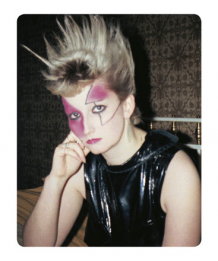




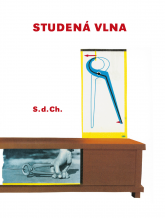
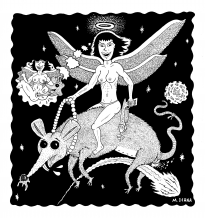
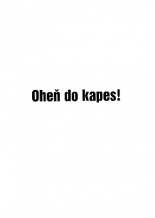
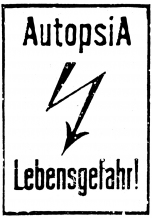


 New book by I.M.Jirous in English at our online bookshop.
New book by I.M.Jirous in English at our online bookshop.
Comentarios
Actualmente no hay comentariosAgregar nuevo comentario